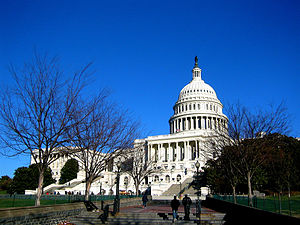I can’t recommend reading Alex Pareene’s article enough on why mass transit is doomed. Sure, it’s true that politicians don’t use it. Let’s put this into a Chicago context. How often do you think Rahm Emanuel rides the CTA, despite living a couple of blocks from the Montrose Brown Line? What about Pat Quinn, who could commute from his northwest side neighborhood in Galewood on the Metra? Before you answer – consider this fact. There exists, under the James Thompson Center (aka Illinois Capitol Building north), a non-public parking garage restricted to select public employees. A similar parking situation exists in the Daley Center, next to City Hall. When parking is free in places it shouldn’t be, what are the incentives for politicians to drive?
Another example. Several years ago, when I was an intern with the Chicago Transit Authority, the Board of the CTA took a tour of the Block 37 cavern. (Let’s neglect the fact that this behemoth was sprung from the brainchild of another politician known for never riding the CTA, Richard Daley. And let’s neglect for the moment that a $200 million basement makes a difference to precisely no one. Imagine a $200 million investment in trains and buses). How did they get there? Not by the Green Line Clinton Station, right outside CTA headquarters. No, there was vehicle transportation arranged for them. Keep in mind that this is the Board of the Chicago Transit Authority.
This is despite the fact that 27% of workers within the City of Chicago take public transportation to work. One in four.
And now, when the CTA is proposing a bus rapid transit solution along Ashland Avenue that speeds up travel times on one of the busiest bus routes in its system, it runs into vehement opposition because it makes driving a car slightly more cumbersome. Because, you know, driving is a god given right also enshrined in our constitution. And everyone drives (except for those 27%).
The problem is, Chicago’s mass transit system, combined, is the third largest in the country. It faces a significant capital shortfall of $18 billion to address state of good repair needs and needs an additional $12 billion over 10 years for normal capital reinvestment. Yet, the system’s sources of funding are not stable and subject to economic swings (sales tax receipts, real estate transfer tax, etc.).





